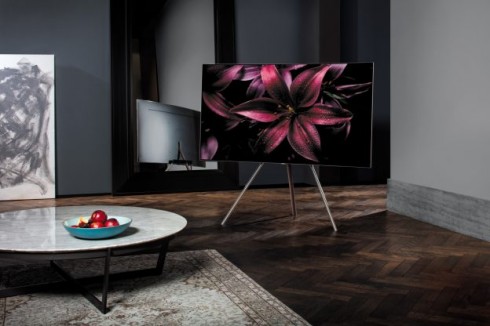Samsung at this year’s CES officially changed the name of its high-end TV lineup from “SUHD” to “QLED,” thus creating market interest on the development of the Quantum Dot (QD) display. WitsView, a division of market intelligence firm TrendForce, expects TV sets with self-emitting QD displays will arrive on the market after 2020 because of technological hurdles and environmental problems related to the recycling of the QD material. WitsView further points out that Samsung’s current QLED TVs represents just the beginning in the development of QD displays.
Like OLED TVs, true or self-emitting QD TVs does not require additional backlight unit. The main difference between OLED and QD is that the former is composed of organic material while the latter is composed of nanometer-sized crystals made of inorganic materials (hence the name Quantum Dot). These crystals emit light of different colors according to the principles of quantum effects. More importantly, the wavelengths or colors that these crystals produce are affected by the radius sizes of the crystals. Therefore, QD displays do not need a color filter layer to create pixels of different colors.
The course of development for QD TVs is divided into three phases. The first phase is the integration of QD with the backlight unit. There are already two technologically matured solutions that are feasible for mass production – the insertion of the QD material into individual LED packages and the deposition of QD material on the optical film of the backlight unit. The second phase is the integration QD with the display. Panel makers and component suppliers are now working on having QD materials replace color resists in the color filter layer of the panel. At this stage, backlight is still needed for the display module. During the third phase, which will take place in the future, panel makers are finally going to be looking at ways to realize self-emitting QD displays and take away the backlight unit.
QLED has an edge over OLED in colors and lifespan but does not comply with environmental regulations and is low in external quantum efficiency
Compared with OLED, the current QLED technology is more durable and can achieve higher color saturation. OLED is based on organic compounds and therefore has a problem of short lifespan, especially with the materials for blue phosphorescent. On the other hand, materials used in QLED displays are toxic. In order to produce better colors, the heavy metal cadmium (Cd) is added to the crystals in the QD material. Presently, the amounts of the Cd dopant used in the production of QLED displays are above the acceptable limit set by the European Union under the Restriction of Hazardous Substance Directive (RoHS). Some companies like Nanoco are working on a Cd-free version of the technology, but the results in terms of external quantum efficiency and longevity are still not good enough for commercialization. Based on a conservative estimate, WitsView believes that QD will not have significant impact on the TV market after 2020.
Samsung uses QLED to differentiate itself in the TV market and its OLED production capacity will be mainly for making medium- to small-size panels
WitsView points out that Samsung’s QLED at its current form is not much different than LCD. A QLED display module has the addition of a sheet of Quantum Dot Enhancement Film (QDEF) that is placed on top of the backlight unit. Instead of emitting light by itself, QDEF adjusts the light from the backlight unit as to bring about better effects such as high color saturation. It is also worth mentioning that competitors including AUO, BOE Technology and Sharp have also developed similar design solutions for their high-end TV panels.
WitsView sees Samsung’s introduction of QLED TVs is mainly a marketing strategy. Samsung wants to differentiate its current high-end TV lineup from LG’s OLED TVs and get consumers to associate its brand name with QD beforehand. The promotion of QLED TVs also suggests that Samsung Display (SDC) will be using its OLED production capacity mainly for making smartphone panels. Conversely, SDC will slow down the development of OLED TV panels.












